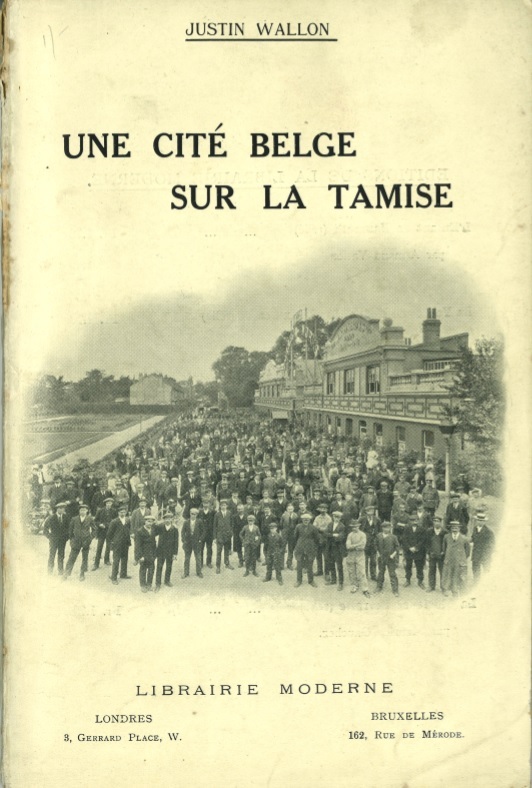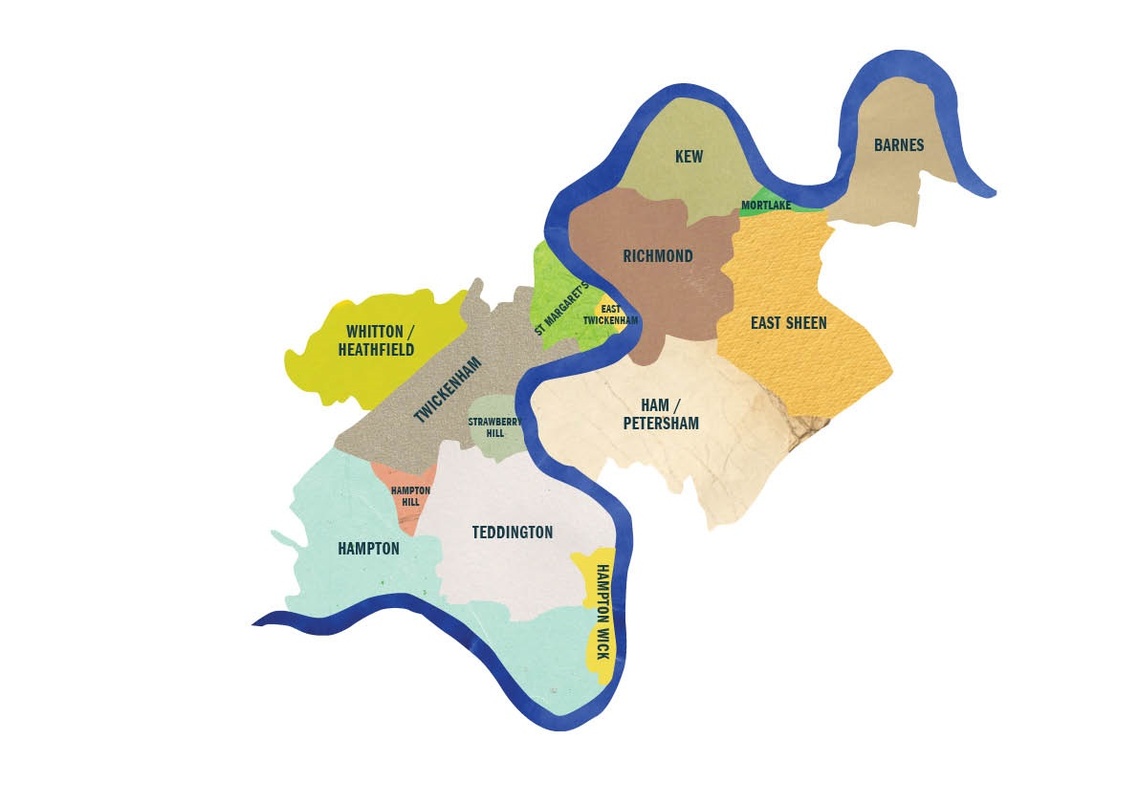|
Where Was The Belgian Village on the Thames ?
|
"The Belgian Village on the Thames" was the name given to the Belgian community of Richmond and Twickenham by Justin Wallon, a Belgian worker at the Pelabon Munitions Factory who wrote a little book on the subject: Une Cite Belge sur la Tamise (1917).
"Justin Wallon" was a pseudonym (meaning "a Walloon": a French-speaking Belgian, as opposed to a Flemish-speaking Belgian). Monsieur "Wallon" was actually Paul Gerardy, a renowned poet and man of letters from Liege in the French-speaking part of Belgium who now lived beside Moor Mead in St Margaret's. He was lucky: his forays into journalism quickly won him a place with the Belgian exile press in London. He knew other professionals - including a poet like himself - who could not practise in England and instead took manual jobs at The Pelabon Works. As he says, this was to occupy their time usefully, avoid relying on charity, and contribute to the Belgian war effort.
Wallon used the French words for "city", "town" and "village" interchangeably in his book, but his wider descriptions make it clear he was thinking in terms of a village. This is why we ourselves use the word "village" for our translation.
There has been lots of confusion about whether the "Belgian Village" was in Twickenham or Richmond, even at the highest levels such as the BBC and the MAS Museum in Antwerp. Wallon himself speaks sometimes on one town, sometimes the other.
So where really was the "Belgian Village on the Thames" The answer is not straightforward.
The Pelabon Munitions Works was in East Twickenham. East Twickenham is quite separate from Twickenham itself and only just across the river from Richmond, joined to it by Richmond Bridge. Many of the Pelabon managers and skilled workers lived in East Twickenham, and the rows of Belgian shops made famous from photos were both in East Twickenham. There is a case for claiming that the "Belgian Village" was the tiny area of East Twickenham.
However the Pelabon factory workers mostly lived a little futher away, many in neighbouring St Margarets and others in Central Twickenham. Other Pelabon workers lived in the back parts of Richmond, extending out to Kew and perhaps further. Some Pelabon workers probably lived beyond the St Margarets-Twickenham boundaries in Islewowrth, Teddington and the Hamptons. Also, a good number of wealthier self-sufficient Belgians lived in Richmond and the more select parts of Twicenham. Although not part of the factory community as such, they must surely have been part of the Belgian community once it became established. There were Belgian shops in Richmond too, but these were never photographed perhaps because they came one-by-one rather than in attractive rows.
It's also important to take account of how the names "Twickenham" and "Richmond" are used. The English residents of East Twickenham have always used the names loosely. Their lives often connect much more to Richmond, just across the river, than to Twickenham, a mile away. Also, saying that you live in "Richmond gives more prestige, certainly in 1915 and still today. Justine Wallon was not alone in using the terms interchangeably.
So the true answer? Well, there is no doubt that East Twickenham was the real focus of the Belgian community and that there was an intensity of Belgian community life there. However, this is not enough to make it the "Belgian Village" on its own.
The "Belgian Village" certainly extended over St Margarets and Central Twickenham, and across the river to Central Richmond and beyond. It may have stretched more loosely even than that.
The best idea of the "Belgian Village" is to see it as a series of concentric circles of decreasing intensity. The "Belgian Village" was not a boundaried neighbourhood occupied entirely by Belgians: it was almost a "virtual" village, where the Belgian community lived in parallel with an equally cohesive English community, each going about its own business. For the most part, each had not a lot do do with the other unless this became necessary.
On the other hand, the Belgian community had rather a lot to do with other Belgian refugees in the region. Dr. Christophe Declercq of the University of Utrecht has identified a "South West London Thames Corridor" running from Chelsea and Fulham out as far as Esher and Thames Ditton, and spreading more widely to take in, for instance, Ealing and Wimbledon. Belgians from these areas certainly met together at times, and it is not impossible that Belgians from some of these places commuted in to work at Pelabon.
To sum up: Was the Belgian Village on the Thames in Twickenham or in Richmond ?
The answer is: BOTH. We ourselves usually talk about "the Belgian refugees of Twickenham-Richmond - and we put "Twickenham" first because without the Pelabon Munitions Works in East Twickeham, the unique 1WW Belgian community of Twickenham-Richmond would never have come into being.
And "How far did the Belgian Village spread out?"
Again, the answer needs some explanation. In our view, the "Belgian Village on the Thames" includes all Belgians who worked at Pelabon together with all those who interacted with the Twickenham-Richmond community in a meaningful way by joining in its social activities, using the shops, and so on. However the further out from the centre, the fewer would be the number of Belgians involved. Eventually it would become absurd to consider the periphery as part of the "village". For practical purposes, going beyond the Twickenhams, St Margarets and Richmond, the "Belgian Village" probably included Teddington, the Hamptons, and East Sheen. It might possibly have included people from Isleworth, Ham and remotely Barnes. Neighbourhoods beyond that had other, closer centres of community and/or employment, and should probably not be regarded in any way as part of the "Belgian Village on the Thames".
(C) Helen Baker 14.12.2023

